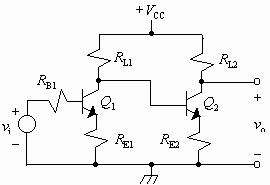Multistage amplifier

For many applications, the performance obtainable from a single-stage amplifier is often insufficient , hence several stages may be combined forming a multistage amplifier. These stages are connected in cascade, i.e. output of the first stage is connected to the input of second stage, whose output becomes input of third stage, and so on.
Overall gain
The overall gain of a multistage amplifier is the product of the gains of the individual stages (ignoring potential loading effects):
- Gain (A) = A1* A2*A3 *A4 *... *An.
Alternately, if the gain of each amplifier stage is expressed in decibels (dB), the total gain is the sum of the gains of the individual stages:
- Gain in dB (A) = A1 + A2 + A3 + A4 + ... An
Inter-stage coupling
Depending on the manner in which the different amplifier stages are connected, one of the following amplifiers may result:
- R-C coupled amplifier
- R-L coupled amplifier
- L-C coupled amplifier
- Transformer coupled amplifier
- Direct coupled amplifier
- Optical coupled amplifier
Transformer coupled amplifiers are often also tuned amplifiers. The inductance of the transformer windings serves as the inductor of a LC tuned circuit. If both sides of the transformer are tuned it is called a double-tuned amplifier. Staggered tuning is where each stage is tuned to a different frequency in order to improve bandwidth at the expense of gain.